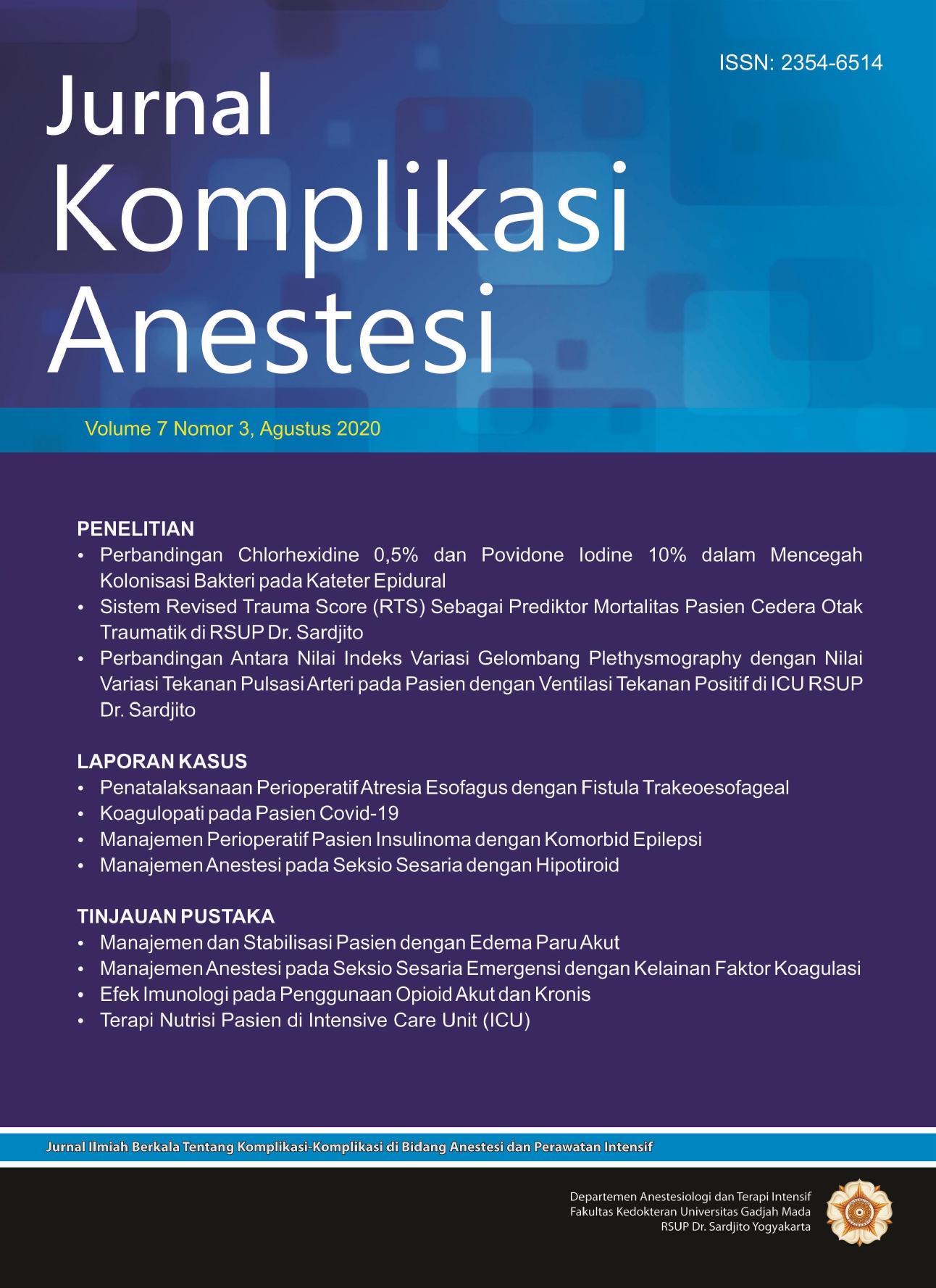Penatalaksanaan Perioperatif Atresia Esofagus dengan Fistula Trakeoesofageal
Abstract
Esophageal atresia with trachheoesophageal fistula occurs in 1 in 3,000 to 5,000 births. Esophageal atresia is often associated with other congenital anomalies like ventricular septal defects, patent ductus arteriosus or tetralogy of fallot. We reported a neonatal patient with esophageal atresia. Surgery was performed 2 days after being treated at the NICU. The operation lasted for 2 hours 25 minutes. The anesthetic technique is GA, semi open with Jackson Reese, ETT number 3, controlled breathing. The premedication was 0.1 mg atropine sulphate and 5 µg fentanyl, induction and maintenance were sevoflurane and O2, and with 1mg atracurium muscle relaxant. Postoperatively, patient was transported to the NICU in an intubated condition. The problems of anesthesia management on patients with esophageal atresia are evaluation of aspiration pneumonia, gastric overdistence, difficulty in ventilating the patient, the presence of other congenital abnormalities, and postoperative intensive care. Early recognition, prevention of aspiration, and immediate delivery to tertiary health care center will improve infant morbidity and mortality significantly.

Copyright (c) 2020 Djayanti Sari, Yunita Widyastuti, Rizqi Ahmad Fauzi

This work is licensed under a Creative Commons Attribution-NonCommercial-ShareAlike 4.0 International License.
The Contributor and the company/institution agree that all copies of the Final Published
Version or any part thereof distributed or posted by them in print or electronic format as permitted herein will include the notice of copyright as stipulated in the Journal and a full citation to the Journal.
















